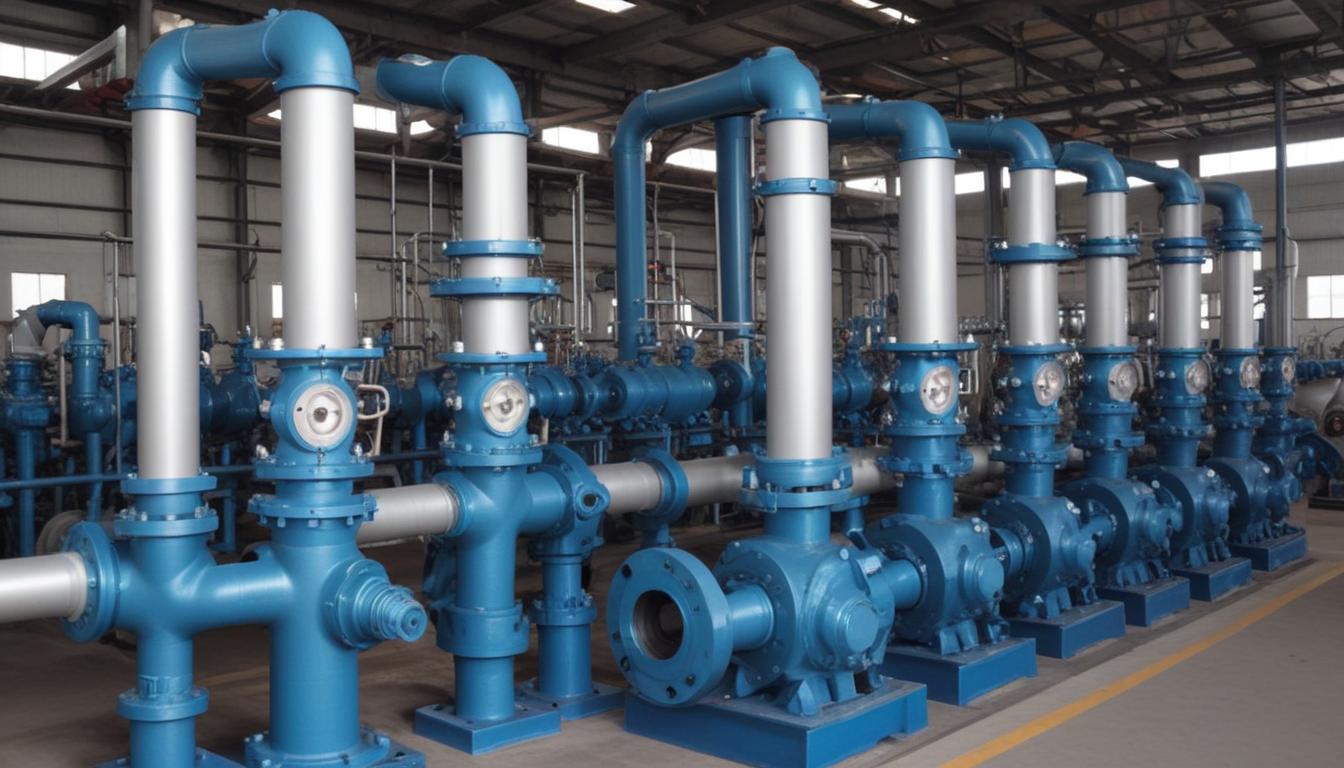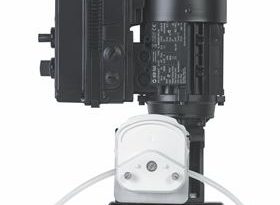pumps used in the chemical industry
The chemical industry utilizes a diverse range of chemical pumps tailored to meet the specific demands of various processes and applications. Understanding the different types is crucial for selecting the appropriate pump that ensures efficiency, reliability, and safety in operations.
- Centrifugal Pumps: These pumps operate by converting rotational kinetic energy to hydrodynamic energy, effectively transferring fluids through the system. They are highly favored for their ability to handle large volumes of low to medium viscosity liquids. Common applications include water treatment, solvent delivery, and the circulation of reactants in chemical reactors.
- Positive Displacement Pumps: Unlike centrifugal pumps, positive displacement pumps move fluid by trapping a fixed amount and forcing it through the discharge. They are ideal for applications requiring precise flow control and the handling of high-viscosity fluids. Subtypes include:
- Gear Pumps: Best suited for thick, viscous liquids such as oils and resins, gear pumps provide consistent flow rates and are commonly used in the transfer of lubricants and chemical additives.
- Diaphragm Pumps: Utilizing a flexible diaphragm to create suction and discharge, these pumps are perfect for handling abrasive or corrosive fluids. They are frequently employed in chemical dosing, transfer operations, and situations where contamination must be avoided.
- Peristaltic Pumps: Operating through a squeezing mechanism on a flexible tube, peristaltic pumps offer sterile and contamination-free pumping. They are widely used in pharmaceutical manufacturing, food processing, and other applications requiring high levels of hygiene.
- Screw Pumps: These pumps provide a smooth, continuous flow with minimal pulsation, making them ideal for handling high-viscosity fluids and slurries. Their ability to handle abrasive materials without significant wear makes them suitable for pumping chemical pastes, adhesives, and other thickened substances.
- Air-Operated Pumps: Powered by compressed air, these pumps are advantageous in environments where electrical power poses a risk or is unavailable. They are commonly used in hazardous chemical processes, where safety and explosion-proof operations are paramount.
- Metering Pumps: Designed for precise dosing of chemicals, metering pumps ensure accurate delivery of additives, catalysts, and other reagents. They are essential in applications such as water treatment, chemical blending, and process control systems.
| Pump Type | Key Features | Typical Applications |
|---|---|---|
| Centrifugal Pumps | High flow rates, low to medium viscosity | Water treatment, solvent delivery, reactant circulation |
| Gear Pumps | Handles viscous fluids, consistent flow | Oil transfer, resin pumping, chemical additives |
| Diaphragm Pumps | Corrosion-resistant, contamination-free | Chemical dosing, abrasive fluid transfer |
| Peristaltic Pumps | Sterile, precise dosing | Pharmaceuticals, food processing, sterile chemical applications |
| Screw Pumps | Minimal pulsation, handles high viscosity | Chemical slurries, adhesives, thickened substances |
| Air-Operated Pumps | Explosion-proof, safe in hazardous environments | Reactive chemical processes, hazardous material handling |
| Metering Pumps | High precision, controlled dosing | Water treatment, chemical blending, process control |
Each type of pump offers unique advantages that cater to specific applications within the chemical industry. Selecting the right pump type is essential for optimizing process efficiency, ensuring product quality, and maintaining operational safety.
selection criteria for chemical industry pumps
Selecting the appropriate pump for chemical industry applications involves a comprehensive evaluation of several critical factors to ensure optimal performance, safety, and longevity. The following criteria are essential in making an informed decision:
1. Chemical Compatibility
Ensuring that the pump materials are compatible with the chemicals being handled is paramount. This prevents corrosion, degradation, and contamination, thereby extending the pump’s lifespan and maintaining process integrity.
- Material Selection: Components such as seals, gaskets, and pump bodies must be chosen based on their resistance to specific chemicals. Common materials include stainless steel, Hastelloy, PTFE, and various elastomers.
- Corrosion Resistance: Evaluating the chemical’s corrosiveness helps in selecting materials that can withstand long-term exposure without compromising performance.
2. Flow Rate and Pressure Requirements
The pump must be capable of delivering the required flow rate and maintaining the necessary pressure levels for the specific application.
- Flow Rate: Determine the volume of fluid that needs to be moved within a given timeframe. This ensures the pump can handle the process demands without causing bottlenecks.
- Pressure: Assess the system’s pressure requirements to select a pump that can operate efficiently without exceeding pressure limits that could damage equipment or affect product quality.
3. Viscosity and Fluid Characteristics
Understanding the viscosity and other physical properties of the fluid is essential for selecting a pump that can handle the specific demands of the application.
- Viscosity: High-viscosity fluids require pumps that can maintain consistent flow without excessive energy consumption or wear.
- Temperature: Operating temperatures can affect fluid viscosity and pump materials. Pumps must be selected to operate effectively within the temperature range of the process.
- Solid Content: If the fluid contains solids or particulates, pumps with appropriate handling capabilities, such as abrasion-resistant components, should be chosen.
4. Efficiency and Energy Consumption
Energy efficiency is a crucial consideration for reducing operational costs and minimizing the environmental impact.
- Operational Efficiency: Select pumps that offer high efficiency at the required operating conditions to ensure cost-effective performance.
- Energy Consumption: Evaluate the pump’s energy usage to choose models that provide the necessary performance with minimal energy expenditure.
5. Maintenance and Reliability
Regular maintenance and the reliability of the pump significantly impact downtime and overall operational efficiency.
- Ease of Maintenance: Pumps should be designed for easy access to critical components, allowing for straightforward maintenance and minimizing downtime.
- Reliability: High-quality pumps with proven durability ensure consistent performance and reduce the likelihood of unexpected failures.
6. Safety and Compliance
Adhering to industry safety standards and regulatory requirements is essential to prevent accidents and ensure safe operations.
- Explosion-Proof Designs: In environments with flammable or hazardous chemicals, pumps must meet explosion-proof standards to mitigate risks.
- Compliance: Ensure that the selected pump complies with relevant industry standards and regulations, such as ANSI, API, or ISO certifications.
7. Installation and Space Constraints
The physical dimensions and installation requirements of the pump must align with the available space and existing infrastructure.
- Footprint: Assess the space available for pump installation to select a pump that fits without necessitating extensive modifications.
- Connection Compatibility: Ensure compatibility with existing piping and system connections to facilitate seamless integration.
8. Cost and Total Cost of Ownership
Evaluating both the initial investment and the long-term costs associated with the pump is crucial for budgetary planning.
- Initial Cost: Compare the upfront costs of different pump options to find a balance between affordability and required specifications.
- Total Cost of Ownership: Consider factors such as energy consumption, maintenance expenses, and replacement parts to understand the overall financial impact.
The following table summarizes the key selection criteria for chemical industry pumps:
| Selection Criterion | Considerations | Impact |
|---|---|---|
| Chemical Compatibility | Material resistance to chemicals, corrosion resistance | Prevents pump degradation, ensures longevity |
| Flow Rate & Pressure | Required volume and pressure levels | Ensures process efficiency, avoids bottlenecks |
| Viscosity & Fluid Characteristics | Viscosity, temperature, solid content | Appropriate pump performance, reduced wear |
| Efficiency & Energy Consumption | Operational efficiency, energy usage | Cost-effective operation, lower environmental impact |
| Maintenance & Reliability | Ease of maintenance, pump durability | Minimized downtime, consistent performance |
| Safety & Compliance | Explosion-proof designs, regulatory standards | Ensures safe operations, regulatory adherence |
| Installation & Space | Pump footprint, connection compatibility | Seamless integration, fit within existing infrastructure |
| Cost & Total Ownership | Initial investment, maintenance costs | Budget management, long-term financial planning |
By meticulously evaluating these criteria, professionals in the chemical industry can select pumps that not only meet the technical demands of their specific applications but also contribute to efficient, safe, and cost-effective operations.
maintenance and troubleshooting
Regular and effective maintenance is critical to ensuring the optimal performance and longevity of chemical pumps within the industry. Implementing a comprehensive maintenance program not only minimizes unexpected downtime but also enhances the reliability and efficiency of pump operations. There are several key strategies and practices that professionals should adopt to maintain pump integrity and address potential issues proactively.
Types of Maintenance
- Preventive Maintenance: Scheduled activities aimed at preventing pump failures before they occur. This includes routine inspections, lubrication, and part replacements based on manufacturer recommendations and operational hours.
- Predictive Maintenance: Involves monitoring the condition of pumps using advanced technologies to predict when maintenance should be performed. Techniques such as vibration analysis, thermal imaging, and acoustic monitoring fall under this category.
- Corrective Maintenance: Reactive maintenance performed after a pump has failed or is exhibiting significant issues. This approach focuses on repairing or replacing faulty components to restore pump functionality.
Maintenance Best Practices
- Regular Inspections: Conducting frequent visual and functional inspections helps in identifying wear and tear, leaks, and other signs of deterioration early. Inspect seals, bearings, and coupling systems to ensure they remain in good condition.
- Lubrication: Proper lubrication of moving parts reduces friction and wear, thereby extending the lifespan of the pump. Follow the manufacturer’s guidelines for the type and frequency of lubrication.
- Component Replacement: Proactively replacing worn or damaged parts such as seals, gaskets, and impellers can prevent major failures. Maintain an inventory of critical spare parts to facilitate swift replacements.
- Documentation: Keeping detailed maintenance logs aids in tracking the history of pump performance and maintenance activities. This information is invaluable for troubleshooting recurring issues and planning future maintenance schedules.
Common Issues and Troubleshooting
| Issue | Possible Causes | Troubleshooting Steps |
|---|---|---|
| Leaking Seals | Worn or damaged seals, improper installation, chemical degradation |
|
| Vibrations | Imbalanced impellers, misaligned shafts, worn bearings |
|
| Unusual Noises | Mechanical looseness, cavitation, foreign objects in the pump |
|
| Reduced Performance | Clogged filters, worn impellers, incorrect pump sizing |
|
| Overheating | Insufficient cooling, high ambient temperatures, blocked vents |
|
Advanced Troubleshooting Techniques
Implementing advanced diagnostic tools can significantly enhance the ability to diagnose and address pump issues effectively:
- Vibration Analysis: Monitoring vibration patterns helps in identifying imbalance, misalignment, and bearing wear early, allowing for timely interventions.
- Thermal Imaging: Detecting abnormal heat signatures can highlight overheating components, electrical issues, or inadequate cooling mechanisms.
- Flow and Pressure Monitoring: Continuously tracking flow rates and pressure levels ensures that pumps operate within their specified parameters, facilitating early detection of performance deviations.
Implementing a Maintenance Schedule
Developing and adhering to a structured maintenance schedule is essential for maintaining pump reliability:
| Maintenance Activity | Frequency | Purpose |
|---|---|---|
| Visual Inspections | Monthly | Identify leaks, wear, and other visible issues |
| Lubrication | As per manufacturer’s guidelines | Reduce friction and prevent wear |
| Filter Cleaning/Replacement | Quarterly | Ensure unobstructed flow and protect pump internals |
| Vibration and Thermal Analysis | Bi-annually | Detect early signs of mechanical issues |
| Comprehensive Performance Testing | Annually | Assess overall pump efficiency and condition |
By adhering to these maintenance and troubleshooting protocols, organizations within the chemical industry can ensure that their chemical pumps operate smoothly and efficiently, thereby supporting uninterrupted and safe chemical processing operations.
applications in various chemical processes
 Chemical pumps play a pivotal role in a wide array of chemical processes, ensuring the efficient and safe transportation of fluids throughout various stages of production. Their versatility and adaptability make them indispensable in numerous industry applications. The following outlines some of the key areas where these pumps are utilized:
Chemical pumps play a pivotal role in a wide array of chemical processes, ensuring the efficient and safe transportation of fluids throughout various stages of production. Their versatility and adaptability make them indispensable in numerous industry applications. The following outlines some of the key areas where these pumps are utilized:
1. Chemical Manufacturing
- Reactant Delivery: Precise delivery of reactants is essential for maintaining reaction stoichiometry. Metering pumps are often employed to ensure accurate dosing of catalysts, acids, and other reactants.
- Product Transfer: After synthesis, chemical products need to be efficiently moved to storage or further processing units. Centrifugal and positive displacement pumps facilitate this transfer, handling varying viscosities and flow rates.
2. Petrochemical Processing
- Crude Oil Transportation: Screw pumps are ideal for moving high-viscosity crude oil through pipelines, minimizing pulsation and handling abrasive particulates effectively.
- Refining Operations: Diaphragm pumps are used in refining processes to handle corrosive intermediates and ensure contamination-free transfers.
3. Pharmaceutical Production
- Sterile Processing: Peristaltic pumps are favored in pharmaceutical applications due to their ability to provide sterile, contamination-free pumping, essential for maintaining product integrity.
- Precise Dosing: Metering pumps ensure the accurate addition of active pharmaceutical ingredients (APIs) and excipients, critical for consistent product quality.
4. Water and Wastewater Treatment
- Chemical Dosing: Metering pumps are extensively used for the controlled addition of chemicals like chlorine, coagulants, and pH adjusters to treat water and wastewater.
- Sludge Handling: Positive displacement pumps, particularly diaphragm and screw pumps, manage the transport of thickened sludge and other high-solid-content waste materials.
5. Food and Beverage Industry
- Ingredient Mixing: Centrifugal pumps facilitate the blending of various ingredients, ensuring uniform distribution and consistency in the final product.
- Sanitary Processes: Peristaltic pumps are employed in applications requiring high hygiene standards, such as pumping dairy products, juices, and other consumables.
6. Mining and Mineral Processing
- Slurry Transport: Screw and centrifugal pumps are used to move mineral slurries, handling abrasive solids and maintaining efficient flow rates necessary for processing operations.
- Chemical Injection: Diaphragm pumps ensure precise injection of flotation reagents and other chemicals used in mineral separation and extraction processes.
7. Power Generation
- Cooling Systems: Centrifugal pumps circulate cooling water to remove excess heat from machinery and reactors, maintaining optimal operating temperatures.
- Chemical Feed: Metering pumps supply necessary chemicals for water treatment and boiler feedwater conditioning, crucial for preventing scale and corrosion.
8. Electronic and Semiconductor Manufacturing
- Chemical Delivery: Precision pumping of high-purity and corrosive chemicals is achieved using diaphragm and peristaltic pumps, ensuring contamination-free processes.
- Waste Disposal: Efficient removal and treatment of hazardous chemical waste streams are managed by specialized centrifugal and positive displacement pumps.
The diverse applications of chemical pumps across these sectors underscore their critical importance in maintaining process efficiency, product quality, and operational safety. Selecting the appropriate pump type tailored to specific process requirements enables industries to optimize their operations and achieve desired outcomes reliably.
Example Applications Table
| Application Area | Specific Use | Suitable Pump Types |
|---|---|---|
| Chemical Manufacturing | Reactant Delivery | Metering Pumps, Diaphragm Pumps |
| Petrochemical Processing | Crude Oil Transportation | Screw Pumps, Centrifugal Pumps |
| Pharmaceutical Production | Sterile Processing | Peristaltic Pumps, Metering Pumps |
| Water Treatment | Chemical Dosing | Metering Pumps, Diaphragm Pumps |
| Food and Beverage | Ingredient Mixing | Centrifugal Pumps, Peristaltic Pumps |
| Mining | Slurry Transport | Screw Pumps, Centrifugal Pumps |
| Power Generation | Cooling Systems | Centrifugal Pumps |
| Electronics Manufacturing | Chemical Delivery | Diaphragm Pumps, Peristaltic Pumps |
By leveraging the appropriate chemical pumps for each application, industries can achieve enhanced operational performance, minimize risks, and ensure the seamless execution of complex chemical processes.
future trends and innovations
Advancements in chemical pump technology are continually shaping the future of the chemical industry, driving improvements in efficiency, sustainability, and operational intelligence. Emerging trends and innovations are poised to revolutionize how pumps are designed, implemented, and maintained across various applications. Key developments include:
- Smart Pumps and IoT Integration: The integration of Internet of Things (IoT) technology into chemical pumps enables real-time monitoring and data collection. Smart pumps can communicate performance metrics, predict maintenance needs, and optimize operations through automated adjustments. This connectivity enhances operational efficiency and reduces downtime by facilitating proactive maintenance strategies.
- Advanced Materials: Innovations in material science are leading to the development of pumps with superior chemical compatibility and durability. Materials such as high-performance polymers, advanced alloys, and corrosion-resistant composites extend the lifespan of pumps and allow them to handle more aggressive chemicals, thereby expanding their range of applications within the industry.
- Energy-Efficient Designs: With increasing emphasis on sustainability, the demand for energy-efficient pump designs is rising. Innovations include the use of variable frequency drives (VFDs) to adjust pump speeds based on real-time demand, reducing energy consumption. Additionally, advancements in hydraulic design minimize friction losses, further enhancing pump efficiency.
- Additive Manufacturing (3D Printing): Additive manufacturing is revolutionizing pump component production by enabling the creation of complex geometries that were previously difficult or impossible to achieve with traditional manufacturing methods. This technology allows for rapid prototyping, customization, and the production of lightweight, high-strength parts, leading to more efficient and adaptable pump designs.
- Enhanced Predictive Maintenance: Leveraging artificial intelligence (AI) and machine learning, predictive maintenance systems can analyze vast amounts of operational data to identify patterns indicative of potential failures. This capability allows for timely interventions, reducing unplanned downtime and extending the operational life of chemical pumps.
- Modular and Scalable Pump Systems: Modern pump designs are increasingly modular, allowing for easy scalability and adaptability to varying process requirements. Modular systems enable quick upgrades, repairs, and configuration changes without significant downtime, enhancing flexibility in dynamic industrial environments.
- Magnetic Drive and Seal-less Technologies: To prevent leaks and enhance safety, magnetic drive and seal-less pump technologies are gaining traction. These designs eliminate traditional mechanical seals, reducing the risk of chemical leaks and minimizing maintenance needs. Such innovations are particularly valuable in handling hazardous or corrosive fluids.
- Compact and Lightweight Designs: As industrial facilities seek to optimize space, the demand for compact and lightweight pump designs is increasing. Innovations in materials and engineering allow for smaller footprint pumps that do not compromise on performance, making them ideal for space-constrained applications.
- Integration with Industry 4.0: The convergence of digital technologies with traditional industrial processes, known as Industry 4.0, is facilitating the development of highly automated and optimized pump systems. Integration with enterprise resource planning (ERP) systems and advanced control algorithms ensures seamless operation and enhances overall process efficiency.
Future Innovations Summary
| Innovation | Description | Benefits |
|---|---|---|
| Smart Pumps & IoT | Real-time monitoring and data-driven optimization | Increased efficiency, reduced downtime |
| Advanced Materials | Use of high-performance polymers and alloys | Enhanced durability, broader chemical compatibility |
| Energy-Efficient Designs | Variable frequency drives and optimized hydraulics | Lower energy consumption, reduced operational costs |
| Additive Manufacturing | 3D-printed pump components with complex geometries | Customization, lightweight, and efficient designs |
| Predictive Maintenance | AI and machine learning for maintenance predictions | Minimized downtime, extended pump lifespan |
| Modular Systems | Scalable and easily upgradable pump designs | Flexibility, quick adaptation to process changes |
| Magnetic Drive Pumps | Seal-less pumping technology | Leak prevention, enhanced safety |
| Compact Designs | Space-saving pump engineering | Optimized facility layout, ease of installation |
| Industry 4.0 Integration | Digital and automated pump systems | Seamless operation, improved process efficiency |
These future-oriented innovations are set to transform the landscape of chemical pumps, driving greater efficiency, reliability, and sustainability within the chemical industry. By embracing these advancements, companies can enhance their operational capabilities, reduce costs, and maintain a competitive edge in a rapidly evolving market.




